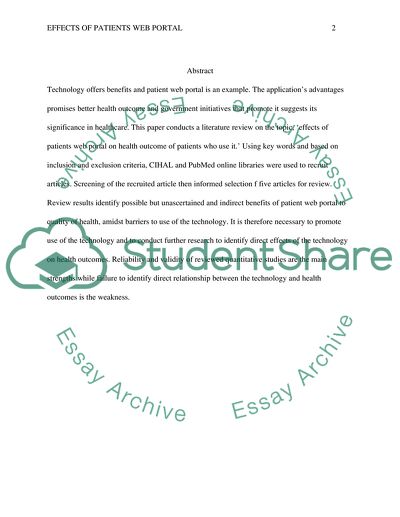Cite this document
(Patients Web Portal Improves Patient Health Outcome in Comparison to Term Paper, n.d.)
Patients Web Portal Improves Patient Health Outcome in Comparison to Term Paper. Retrieved from https://studentshare.org/health-sciences-medicine/1867564-patients-web-portal-improves-patient-health-outcome-in-comparison-to-non-web-portal
Patients Web Portal Improves Patient Health Outcome in Comparison to Term Paper. Retrieved from https://studentshare.org/health-sciences-medicine/1867564-patients-web-portal-improves-patient-health-outcome-in-comparison-to-non-web-portal
(Patients Web Portal Improves Patient Health Outcome in Comparison to Term Paper)
Patients Web Portal Improves Patient Health Outcome in Comparison to Term Paper. https://studentshare.org/health-sciences-medicine/1867564-patients-web-portal-improves-patient-health-outcome-in-comparison-to-non-web-portal.
Patients Web Portal Improves Patient Health Outcome in Comparison to Term Paper. https://studentshare.org/health-sciences-medicine/1867564-patients-web-portal-improves-patient-health-outcome-in-comparison-to-non-web-portal.
“Patients Web Portal Improves Patient Health Outcome in Comparison to Term Paper”, n.d. https://studentshare.org/health-sciences-medicine/1867564-patients-web-portal-improves-patient-health-outcome-in-comparison-to-non-web-portal.


